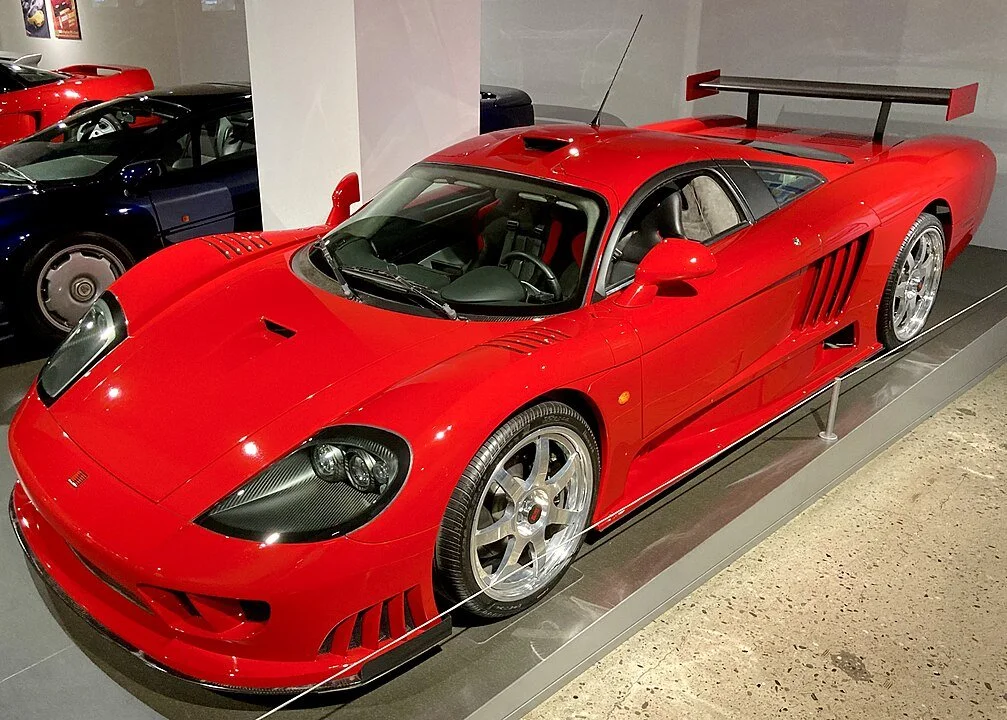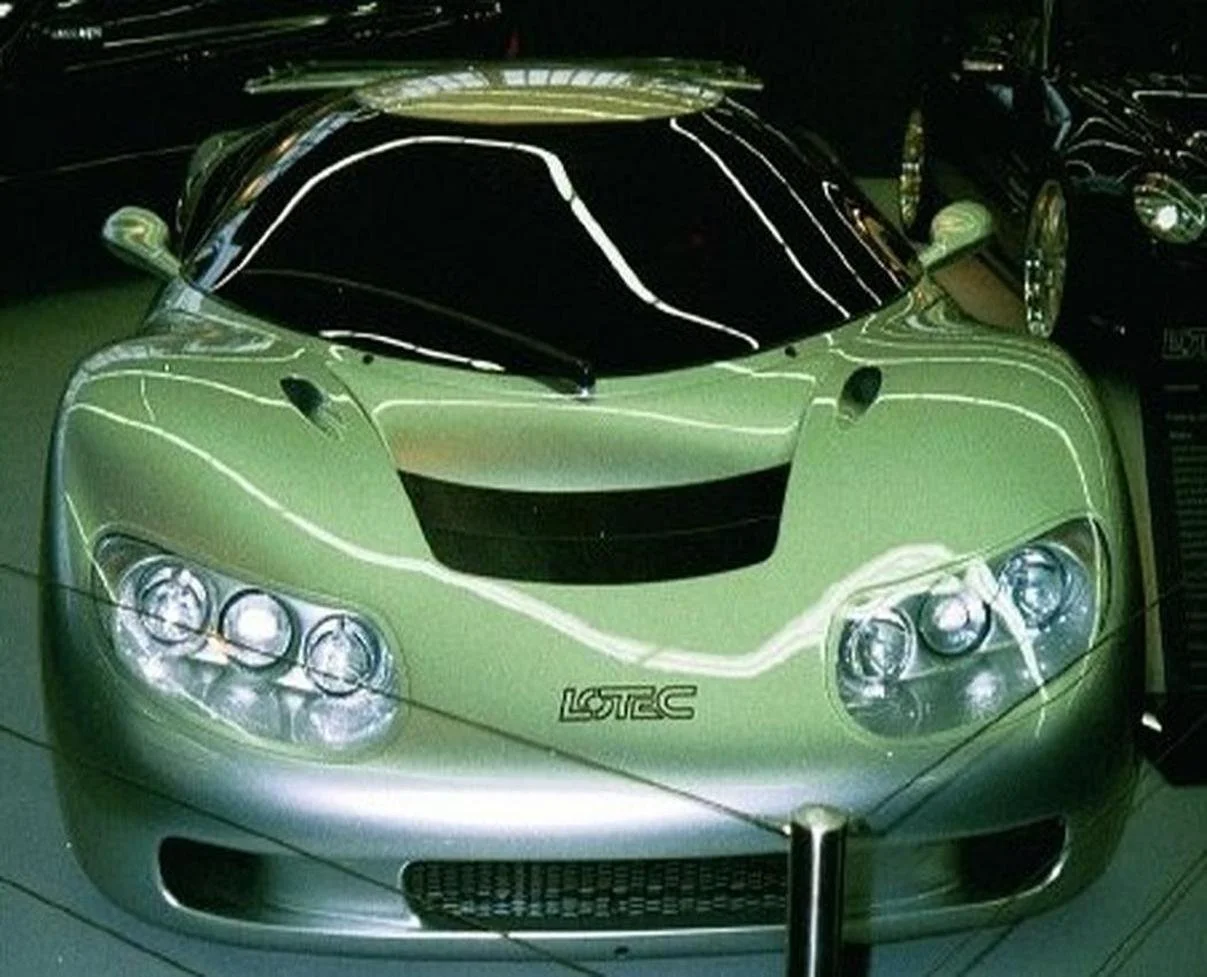Die seltensten Hypercars aller Zeiten: Limitierte Meisterwerke der Automobilkunst Teil 1
Die Welt der Hypercars ist geprägt von Superlativen – doch selbst in diesem erlesenen Kreis gibt es Fahrzeuge, die alle Maßstäbe sprengen. Es sind die seltensten und limitiertesten Hypercars aller Zeiten, bei denen Geschwindigkeit, Technik und Design auf pure Exklusivität treffen. Jedes dieser automobileschen Kunstwerke erzählt seine eigene Geschichte: Von kühnen Visionen der Entwickler und bahnbrechenden technischen Besonderheiten bis hin zu spektakulären Auktionen und steilen Wertzuwächsen auf dem Sammlermarkt. Dieser Artikel entführt Sie in die fesselnde Welt dieser Unikate, schildert emotional deren Entstehung und Besonderheiten und gibt Einblicke, warum limitierte Hypercars so begehrt sind. Abschließend bieten wir Tipps für Sammler, wie man an solche Juwelen gelangt und worauf zu achten ist. Tauchen wir ein in diese exklusive Garage der Träume!
1. Lamborghini Veneno – Kampfjet für die Straße
Stückzahl 12
Stückzahl 12
Wenn Lamborghini ein Jubiläum feiert, tut man das nicht mit Zurückhaltung. Zum 50. Geburtstag der Marke präsentierten die Italiener 2013 eines der spektakulärsten Fahrzeuge ihrer Geschichte: den Lamborghini Veneno. Basierend auf dem Aventador, aber radikal weiterentwickelt, wurde der Veneno zu einem rollenden Technologiedemonstrator – produziert in einer Gesamtauflage von nur 12 Einheiten weltweit (3 Coupés, 9 Roadster).
Design: Aggression in Reinform
Der Veneno wirkt wie ein getarnter Kampfjet auf Rädern. Jede Linie, jeder Einlass, jeder Winkel wurde auf Aerodynamik und Abtrieb optimiert – gleichzeitig aber so inszeniert, dass das Fahrzeug wie aus einem Videospiel entsprungen scheint.
Gestaltungsmerkmale:
Riesiger Heckflügel mit einstellbaren Flaps
Dreiteilige Frontsplitter-Einheit
Kiemenförmige Luftkanäle an Dach und Kotflügeln
Monocoque komplett aus Karbon
Zentraler Finnenrücken zur Luftstromführung
Antrieb & Performance
Im Herzen arbeitet der bewährte 6,5-Liter-V12-Saugmotor, auf 750 PS gesteigert und mit einem modifizierten Auspuffsystem für gesteigerte Gasannahme. Das Getriebe ist ein automatisiertes ISR-7-Gang-System, das Schaltvorgänge in unter 50 Millisekunden erlaubt.
Technische Daten:
Motor: 6,5-Liter V12 Saugmotor
Leistung: 750 PS
0–100 km/h: 2,8 Sekunden
Top-Speed: 355 km/h
Antrieb: Allrad (Lamborghini ISR)
Innenraum: Rennsport trifft Extravaganz
Auch im Cockpit ist der Veneno kompromisslos: Kohlefaser dominiert, Alcantara unterstreicht die Exklusivität. Das digitale Kombiinstrument wurde aus dem Rennsport abgeleitet, ebenso die Sitzposition und das Steuerlayout.
Innenraum-Highlights:
Forged Composite-Zierleisten
Spezielle "Veneno"-Plaketten mit Seriennummer
Integriertes Datenerfassungssystem
Feuerlöscheinheit und Notabschaltung (Track-konform)
Limitierung & Sammlerwert
Nur drei Coupés wurden an externe Kunden verkauft – alle mit individuellem Farbschema. Neun Roadster folgten später. Der Einstiegspreis lag bei rund 3,3 Millionen Euro netto – heute erzielen gut gepflegte Exemplare bei Auktionen über 8 Millionen Euro.
Der Veneno wurde damit nicht nur zu einem extremen Hypercar, sondern auch zu einem extrem soliden Investment.
Fazit
Der Lamborghini Veneno ist mehr als ein Geburtstagsgeschenk – er ist ein rollender Beweis dafür, dass man in Sant’Agata Bolognese keine Kompromisse kennt. Mit brutaler Formensprache, reinrassigem V12-Motor und extremer Limitierung zählt der Veneno heute zu den begehrtesten und seltensten Lamborghini-Modellen aller Zeiten.
2. Saleen S7 LM – Der vergessene Titan der 1.000-PS-Liga
Stückzahl 3
Stückzahl 3
In der Liste der ikonischen Hypercars taucht der Saleen S7 LM nur selten auf – dabei gehört er zu den extremsten Fahrzeugen, die jemals straßenzugelassen wurden. Entwickelt in den USA, aufgebaut auf einer kompromisslosen Motorsport-Plattform und limitiert auf gerade einmal drei Exemplare weltweit, ist der S7 LM ein echtes Phantom der Szene – mit über 1.000 PS und Le-Mans-DNA.
Historie: Vom Rennwagen zum Hypercar
Der ursprüngliche Saleen S7 wurde 2000 als amerikanische Antwort auf Ferrari und Lamborghini präsentiert. Doch erst mit der LM-Version (für „Le Mans“) erhielt der S7 seine finale Form: Mit massiv überarbeiteter Aerodynamik, neuer Motortechnik und einem kompromisslosen Ziel – Performance auf allerhöchstem Niveau.
Die LM-Version entstand ab 2016 auf Basis der letzten S7-Twin-Turbo-Chassis – von Saleen selbst aufgebaut und abgestimmt.
Motorisierung: Twin-Turbo-V8 aus der Hölle
Herzstück des S7 LM ist ein 7,0-Liter-V8-Twin-Turbo mit Trockensumpfschmierung. Der Motor basiert auf Renntechnik aus dem ALMS-Programm und liefert im LM-Trim über 1.300 PS bei hohem Ladedruck – bei einem Fahrzeuggewicht von unter 1.300 kg.
Technische Daten:
Motor: 7,0-Liter V8 Biturbo
Leistung: 1.300+ PS (offiziell: 1.305)
0–100 km/h: ca. 2,8 Sekunden
Top-Speed: über 390 km/h
Getriebe: 6-Gang manuell
Antrieb: Hinterrad
Fahrverhalten & Technik
Der S7 LM nutzt ein vollständig in Handarbeit gefertigtes Aluminium-Hybrid-Chassis mit integrierten Stahlstreben, Pushrod-Aufhängung und Rennsport-Bremsen. Die Aerodynamik wurde weiter verfeinert, u. a. mit einem Carbon-Heckdiffusor, vergrößerten Einlässen und einem aktiven Flap-Heckspoiler.
Weitere Features:
Semi-slick Reifen auf Magnesiumrädern
Rennkupplung mit Karbon-Keramikscheiben
Angepasste Lenkgeometrie für hohe Geschwindigkeiten
Track-taugliche Kühlung und Luftführung
Innenraum: Funktion mit Stil
Der Innenraum ist funktional, aber nicht spartanisch. Alcantara, Aluminium und Sichtcarbon prägen das Bild. Kunden konnten individuelle Farbschemata wählen. Rennsitze mit 6-Punkt-Gurten, digitale Telemetrieanzeigen und eine minimalistische Mittelkonsole vervollständigen das sportliche Layout.
Limitierung & Marktwert
Es wurden exakt drei Fahrzeuge des Saleen S7 LM gebaut. Alle sind in Sammlerhand und wurden ausschließlich direkt durch Saleen vertrieben. Der ursprüngliche Preis lag bei über 1,5 Millionen Dollar – heute werden Werte von bis zu 4 Millionen Euro gehandelt, sofern überhaupt ein Fahrzeug zum Verkauf steht.
Fazit
Der Saleen S7 LM ist das Hypercar, das viele übersehen – aber keiner unterschätzen sollte. Technisch radikal, historisch bedeutsam und extrem selten verkörpert er die amerikanische Interpretation eines Le-Mans-Straßenwagens. Für Kenner ist er ein Kultobjekt – und für Sammler ein unersetzbares Stück Motorsportgeschichte.
3. Lotec Sirius – Deutschlands fast vergessenes Hypercar
Stückzahl 1
Stückzahl 1
In den 2000er-Jahren tauchte ein Name auf, den kaum jemand auf dem Schirm hatte: Lotec Sirius. Das Einzelstück aus Deutschland war eine technische Machtdemonstration – und dennoch verschwand es fast spurlos aus der öffentlichen Wahrnehmung. Dabei handelt es sich um eines der seltensten und stärksten Hypercars Europas – mit über 1.200 PS Leistung und einer Entstehungsgeschichte, die fast zu unglaublich ist, um wahr zu sein.
Herkunft: Von der Rennstrecke ins Labor
Lotec wurde ursprünglich in den 1960er-Jahren als Rennsportmanufaktur gegründet. Bekannt wurde das Unternehmen durch Prototypen und Aerodynamikbausätze für Porsche- und Mercedes-Modelle. In den 1990er-Jahren entwickelte Lotec im Auftrag eines arabischen Kunden den Lotec C1000, ein extremes Einzelstück mit Jet-Design und 1.000-PS-Mercedes-V8.
Der Sirius war die Evolution dieses Gedankens – diesmal aber nicht als reiner Auftrag, sondern als Versuch, ein eigenes Hypercar in Kleinserie aufzulegen. Es blieb bei einem einzigen gebauten Exemplar.
Technik: V12 mit Mercedes-Wurzeln
Im Sirius arbeitet ein 6,0-Liter-V12-Biturbo, basierend auf dem Mercedes M120-Triebwerk, das auch im Pagani Zonda Verwendung fand. Bei Lotec wurde es massiv überarbeitet – mit zwei großen Turboladern, Ladeluftkühlung und Motorsport-Abstimmung.
Technische Daten:
Motor: 6,0-Liter V12 Twin-Turbo (Mercedes M120 Basis)
Leistung: ca. 1.200–1.300 PS (je nach Konfiguration)
0–100 km/h: unter 3 Sekunden
Top-Speed: >400 km/h (theoretisch)
Antrieb: Hinterrad
Ein sequentielles 6-Gang-Renngetriebe überträgt die Kraft – dazu kommt ein Kohlefaser-Monocoque mit integrierter Sicherheitszelle und voll einstellbarer Doppelquerlenker-Aufhängung.
Design: Skulptur oder Flugobjekt?
Der Look des Sirius ist – gelinde gesagt – speziell: Die flache Front, die keilförmige Karosserie, die integrierten Lufteinlässe und die rahmenlose Verglasung lassen das Auto futuristisch und fast außerirdisch erscheinen.
Besondere Merkmale:
Carbon-Karosserie mit Alu-Chassis
Doppel-Xenon-Frontscheinwerfer
Glasdach mit Lufteinlass
Mittelzentrierte Auspuffführung
Die Proportionen erinnern eher an einen Prototypen aus Le Mans als an ein straßenzugelassenes Auto – doch genau das macht seinen Reiz aus.
Innenraum: Funktioneller Prototyp
Der Innenraum war – Stand Präsentation – funktional, aber noch nicht serienreif. Sichtcarbon, Alu-Schalter, ein minimalistisches Display und Racing-Sitze dominierten. Für Kunden war eine Konfiguration vorgesehen, doch dazu kam es nie – der Sirius blieb ein Einzelstück.
Marktwert & Legendenstatus
Da nur ein einziges Exemplar existiert, gibt es keinen Marktwert. In Sammlerkreisen gilt der Sirius als fast vergessenes Kultobjekt. Fotos davon tauchen selten auf, Sichtungen in der Öffentlichkeit sind praktisch ausgeschlossen. Man geht davon aus, dass das Fahrzeug in privatem Besitz in Deutschland oder dem Nahen Osten ist.
Fazit
Der Lotec Sirius ist der Beweis, dass auch außerhalb von Maranello, Molsheim oder Woking großartige Hypercars entstehen können. Mit deutscher Ingenieurskunst, kompromisslosem Anspruch und einer bizarren Formensprache gehört der Sirius zu den seltensten und geheimnisvollsten Hypercars der Welt – und verdient einen festen Platz in der Geschichte der automobilen Exoten.
4. 10. Ferrari FXX-K Evo – Maranellos ultimative Versuchung
Stückzahl 40
Stückzahl 40
Wer denkt, Ferrari baue nur straßentaugliche Sportwagen, hat noch nie vom FXX-Programm gehört. Die 2017 präsentierte FXX-K Evo-Version ist die Speerspitze dieses Konzeptes: ein Track-only-Hypercar ohne Straßenzulassung, dafür mit unvorstellbarer Performance, modernster Aerodynamik und limitierter Stückzahl – geschätzt unter 40 Exemplaren weltweit.
Ursprung: Forschung im Kundenauftrag
Der Ferrari FXX-K Evo ist die Weiterentwicklung des 2015 eingeführten FXX-K, selbst eine Hardcore-Track-Variante des LaFerrari. Die Evo-Version war kein völlig neues Auto, sondern ein Performance-Upgrade, das auch auf bestehende FXX-Ks aufgespielt werden konnte – allerdings nur gegen Einladung und immensen Aufpreis.
Käufer wurden automatisch Teil des Ferrari Corse Clienti Programms, das streng kontrollierte Rennstreckeneinsätze, umfassendes Datenmonitoring und Technik-Support direkt aus Maranello umfasst.
Antrieb: V12 + E = Rage
Der FXX-K Evo verfügt über einen weiterentwickelten Hybridantrieb: Der 6,3-Liter-V12-Saugmotor liefert 860 PS, der Elektromotor nochmals 190 PS. Die Systemleistung liegt bei 1.050 PS, verteilt auf die Hinterachse.
Technische Daten:
Motor: 6,3-Liter V12 + E-Motor
Leistung: 1.050 PS
0–100 km/h: unter 2,5 Sekunden
Top-Speed: über 350 km/h
Getriebe: 7-Gang-Doppelkupplung
Antrieb: Heck
Das KERS-System stammt direkt aus der Formel 1 und speist Energie aus Brems- und Lastwechselphasen in die Batterie zurück.
Aerodynamik: Windbeherrschung
Der größte Unterschied zur Standard-FXX-K ist das radikalere Aerodynamikpaket: Ein fixes Doppelflügel-Heck ersetzt den aktiven Spoiler. Dazu kommen neue Finnen, Luftleitkanäle, Splitter und Unterbodenoptimierungen. Ergebnis: 23 % mehr Abtrieb als beim FXX-K – und 75 % mehr als beim LaFerrari.
Aerodynamik-Highlights:
Doppelflügel mit Endplattenstruktur
Zwei vertikale Finnen auf der Motorhaube
Verbreiterte Luftauslässe am Unterboden
Diffusor mit aktiver Strömungskontrolle
Innenraum: Rennwagen pur
Keine Kompromisse: FIA-konformer Käfig, Racing-Schalensitze, Feuerlöschsystem, Telemetrie-Einheit, 6-Punkt-Gurte, Kommunikationssystem für Boxenfunk – alles orientiert sich an echten GT-Rennwagen.
Der Innenraum ist vollständig in Alcantara und Carbon gehalten, das Kombiinstrument digital, aber im Look eines F1-Lenkrads integriert.
Exklusivität: Programm statt Besitz
Ein Ferrari FXX-K Evo ist nicht einfach ein Auto – er ist Teil eines Privatrennprogramms. Kunden müssen über enge Verbindungen zu Ferrari verfügen, das Fahrzeug verbleibt häufig sogar im Werk und wird von Ferrari zu den Trackdays transportiert. Die Zahl der Evo-upgegradeten Fahrzeuge liegt unter 40 Stück, teils wird von nur 30 gesprochen.
Der Neupreis (inkl. Trackprogramm, Wartung und Transport) lag bei über 3 Millionen Euro.
Fazit
Der Ferrari FXX-K Evo ist das Extremste, was Maranello je für Privatiers gebaut hat. Kein Kompromiss, kein Komfort – nur brutale Performance, Aerodynamik auf LMP1-Niveau und ein Fahrerlebnis, das selbst Profis Respekt einflößt. Als Hypercar ohne Straßenzulassung ist er dennoch ein Höhepunkt technischer Exzellenz – und eine der exklusivsten Ferrari-Kreationen aller Zeiten.
5. Zenvo TSR-S – Der Hypercar-Exot aus Dänemark
Stückzahl < 25
Stückzahl < 25
Dänemark – nicht gerade das erste Land, das einem in den Sinn kommt, wenn es um Hypercars geht. Und doch hat Zenvo mit dem TSR-S ein Fahrzeug geschaffen, das in vielerlei Hinsicht seinesgleichen sucht: Technisch radikal, extrem limitiert und mit einem Design, das polarisiert – inklusive eines aktiven „Zentrifugal“-Heckflügels. Mit nur rund 15 gebauten Fahrzeugen weltweit zählt der TSR-S zu den seltensten europäischen Hypercars mit über 1.000 PS.
Technik: Pure mechanische Gewalt
Im Zenvo TSR-S arbeitet kein Hybridantrieb, sondern ein konventioneller, aber hochgezüchteter 5,8-Liter-V8 mit Biturboaufladung. Die Leistung liegt bei 1.177 PS – rein auf die Hinterräder übertragen. Das Fahrgefühl ist entsprechend brachial und puristisch.
Technische Daten:
Motor: 5,8-Liter V8 Biturbo
Leistung: 1.177 PS
0–100 km/h: 2,8 Sekunden
Top-Speed: elektronisch begrenzt auf 325 km/h
Getriebe: 7-Gang sequentiell mit Dogbox-Modus
Antrieb: Heck
Das Alleinstellungsmerkmal: Der fliegende Heckflügel
Das auffälligste Merkmal des TSR-S ist der patentierte aktiver Zentrifugal-Heckflügel, der sich nicht nur neigt, sondern auch asymmetrisch kippt – je nach Lenk-, Brems- und Beschleunigungsbewegung. Dadurch wird der Anpressdruck in Kurven dramatisch erhöht, ohne die Geradeausfahrt negativ zu beeinflussen.
Zenvo nennt dieses System „Centripetal Wing“ – ein weltweit einzigartiges Feature, das den TSR-S optisch und funktional unverwechselbar macht.
Design & Aufbau
Die Karosserie besteht aus kohlefaserverstärktem Verbundmaterial, das auf ein ultraleichtes Monocoque montiert ist. Die Optik ist kantig, aggressiv und modern. Jedes Fahrzeug ist vollständig individualisierbar – von Farbe und Interieur bis hin zur Fahrwerksabstimmung.
Besonderheiten:
Asymmetrischer Flügelmechanismus
Kohlefaser-Aerodynamikpaket
Rennsport-Interieur mit digitalem Cockpit
Launch Control & Traktionsregelung auf Rennniveau
Exklusivität und Marktposition
Zenvo produziert den TSR-S in einer Stückzahl von rund 5 Fahrzeugen pro Jahr, insgesamt sind unter 20 Fahrzeuge weltweit ausgeliefert worden. Preislich liegt das Modell bei rund 1,8 Millionen Euro – je nach Ausstattung deutlich mehr.
Besonders: Zenvo bietet jedem Kunden einen persönlichen Ingenieur als Ansprechpartner sowie Zugang zu privaten Events und Fahrprogrammen.
Fazit
Der Zenvo TSR-S ist ein echter Geheimtipp unter Hypercar-Kennern. Technisch kompromisslos, optisch extrem und mit einem der faszinierendsten Aerodynamiksysteme der Welt ausgestattet, zeigt er, dass auch kleine Manufakturen ganz oben mitspielen können – wenn sie den Mut zur Eigenständigkeit haben.
👉Was dir in Zusammenhang mit diesem Beitrag auch gefallen könnte:
Die 10 exklusivsten Hypercars 2025: Limitierte Supermaschinen, die Geschichte schreiben Teil 1
Die 10 exklusivsten Hypercars 2025: Limitierte Supermaschinen, die Geschichte schreiben Teil 2
Design-Ikonen: Die ästhetisch beeindruckendsten Hypercars aller Zeiten





